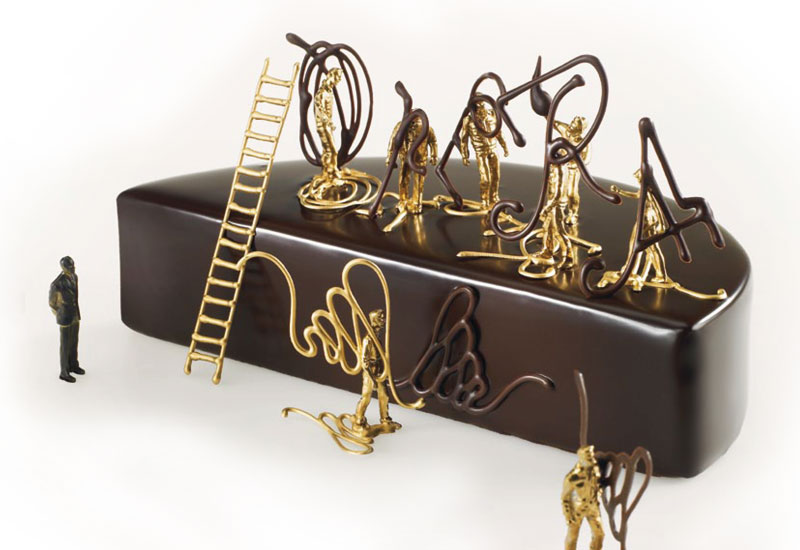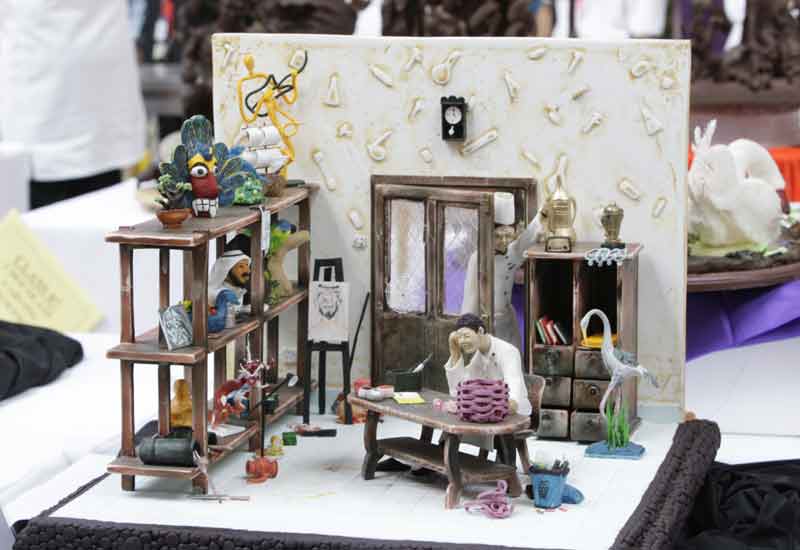 High-end chocolate companies, like Valrhona who created this product, are noticing an increase in demand for first-class quality products
High-end chocolate companies, like Valrhona who created this product, are noticing an increase in demand for first-class quality products
Can’t take the heat?
The logistical challenges in supplying the region do not end there. Temperature control is a major concern for both chefs and suppliers because the taste and texture of chocolate products can be affected by the region’s hot climate.
At a time when the price of chocolate is unstable, the extra cost of temperature-controlled distribution is an added frustration.
“Handling the region’s weather conditions is a real challenge for us,” says ChoCo’a managing partner, Assem Hamzeh. “It definitely helps to wrap the chocolate in foil – a simple thing that offers extra protection to our products.

| Advertisement |
For deliveries, we use temperature-controlled vans to maintain the texture and taste of the chocolate and we avoid the product being outdoors for any longer than 10 seconds.
“We also advise our customers to store the chocolate at room temperature rather than put it in the fridge. Extreme cold, as well as heat, will alter the taste and texture – so it’s a delicate balance of these two elements.”
Education
Chefs and suppliers report that the region’s chocolate tastes are slowly evolving as consumers move away from “quick and easy to eat” milk chocolates to dark chocolates with a higher cocoa percentage and lower sugar content.
"Dark chocolate is becoming a gourmet product, served in five-star hotel restaurants, says Zeyneb Larabi, regional sales manager for Valrhona, which is distributed by Chef Middle East across the region."Further to using the best products for their starters and main dishes (ingredients like high-quality salmon, high-quality foie gras, high-quality meat), chefs are looking for high quality desserts.”
"And as palates mature the demand for new tastes is increasing, with consumers seeking out chocolate infused with herbs and chocolate-based savoury dishes.
A lack of understanding among the region’s consumers means that the trend for savoury chocolate dishes is still in its infancy. There is still a long way to go before chefs wean diners off their love for milk chocolate and introduce them to the diversity of high-quality dark chocolate as an ingredient.
“The trend for savoury chocolate dishes is definitely catching on, but at the moment we’re only doing it for special menus,” says Kempinski Hotel Ajman pastry chef, Pierre-Julien Rebuzzi.
“A dish like chocolate on foie gras for example is a fantastic taste experience, but I think there needs to be more education to fully introduce chocolate dishes like this. One of the benefits of including these dishes on special menus is that we get to interact with the guests and trigger their interest.”
It could be argued that the region’s chocolate market is expanding at a faster rate than necessary to meet consumer demand – perhaps, in part, due to the increased competition at the top end of the region’s hotel and F&B industries.
Luxury operators are searching for cost-effective ways to differentiate their offering from the competition, and high-quality, luxury chocolates “fit the mould”.
To this end, the region’s suppliers and chefs fully understand the importance of education when introducing new chocolate products and concepts. “I think an important segment of demand is being driven by the chefs themselves,” says Valrhona’s Larabi.
“As they introduce new chocolate concepts onto their menus they are educating people about the different colours, tastes and nuances.”









 Search our database of more than 2,700 industry companies
Search our database of more than 2,700 industry companies









